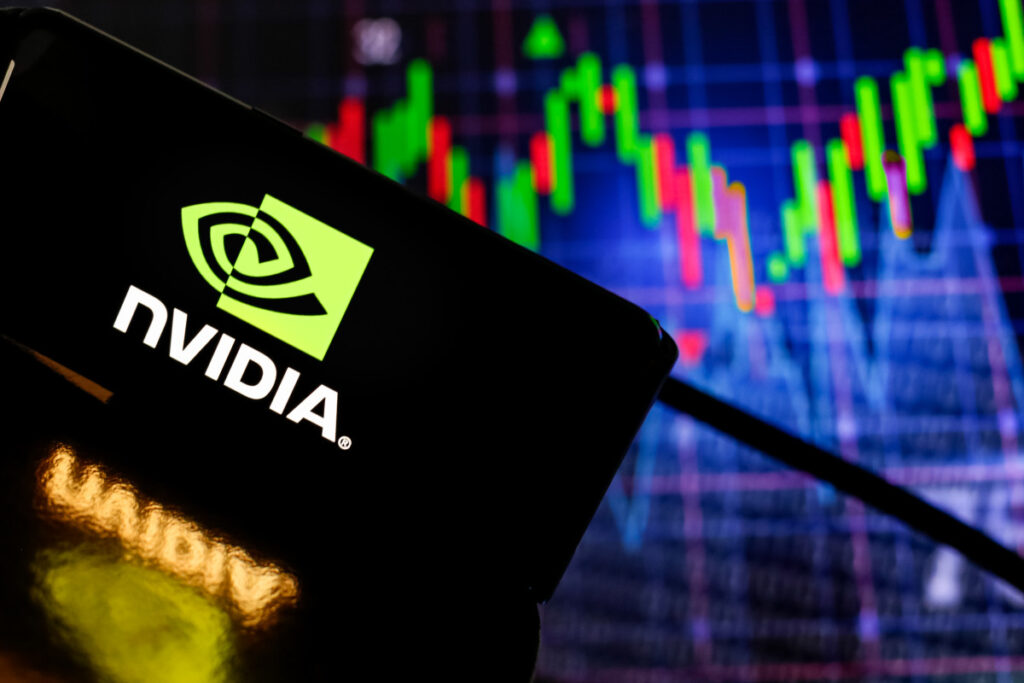Nvidia shares surprised investors by opening Monday in a surprising slump.
The shares fell 2.6% to $118.29 on a report that China was telling local developers of artificial intelligence applications to use only Chinese-made chips in their products.
Don’t miss the move: Subscribe to TheStreet’s free daily newsletter
China is an important market for Nvidia (NVDA) products. Sales to China totaled $6.1 billion, or about 11% of its first-half revenue.
Related: Analysts revamp stock price targets on top Warren Buffett stock (hint: It’s not Apple)
But as the day went on, the intensity of the story seemed to wane. As a result, Nvidia recovered all those early losses and ended the day up 4 cents to $121.44.
At last check in the premarket the shares were up 0.2% to $121.73.
For September, the shares were up 1.7% and ended the third quarter down 1.7%. They have fallen 13.7% from their 52-week high of $140.76, reached on June 20.
BUT Nvidia shares were still up 145.2% year-to-date, the second best S&P 500 gainer in 2024 after energy company Vistra’s (VST) 207.7% gain.
That’s a mighty return, but Nvidia had risen as much as 184% in the early part of 2024. The stock has fallen back as much of the frothiness in many technology and chip stocks has dissolved.
More AI Stocks:
- Apple stock slides as big iPhone 16 bet sputters
- Analyst revisits Meta stock price target as Facebook parent ramps AI spend
- Analyst reviews BlackRock stock rating after AI partnership with Microsoft
Nvidia’s relationship with the People’s Republic of China is, in fact, complicated. Both are economic giants that have embarked on new rounds of stimulus.
The company is forbidden to sell its most powerful products, including the H100 graphics-processing units, to China, under a 2022 Biden administration order. The administration, like the Trump administration, has regarded China’s interest in American technology with suspicion.
The Chinese government wants to support its sophisticated and rapidly growing technology sector and has very visible interests in taking control of everything in the South China Sea, with Taiwan a big focal point.
Nvidia is allowed to sell its less powerful products, however.
Nvidia products easily find their way to China
And despite the export bans, Nvidia’s chips and its powerful GPUs, particularly the H100 GPUs, are getting to the Chinese mainland. And demand for Nvidia’s next generation Blackwell chips, which haven’t been released yet, is huge.
The Wall Street Journal and The New York Times have documented how active networks of players are engaged in obtaining Nvidia’s most powerful GPUs and shipping them to China.
The means can be as easy as forming companies outside China that will buy the GPUs and ship them into the mainland. Or maybe a Chinese student in Singapore going home on vacation sticks some of the units in a suitcase that doesn’t get close inspection.
Or a company will be organized to build data centers outside China that use Nvidia chips and products and make their computing power available to customers on the mainland.
There are distributors who advertise online their ability to get the chips, and it’s unclear how they get their supplies. Nvidia typically sells its GPUs and related products to other companies, such as Dell Technologies (DELL) , which install them in server computers and related products.
The traffic flow of products and services may be only a stopgap measure. China is supporting home-grown companies that can produce chips that do what Nvidia’s products can.
Bytedance, the parent of TikTok, is planning to develop an AI capability with chips from Huawei Technologies, the Chinese tech giant that is now the world’s largest smartphone maker, Reuters reported.
Related: The 10 best investing books, according to our stock market pros
